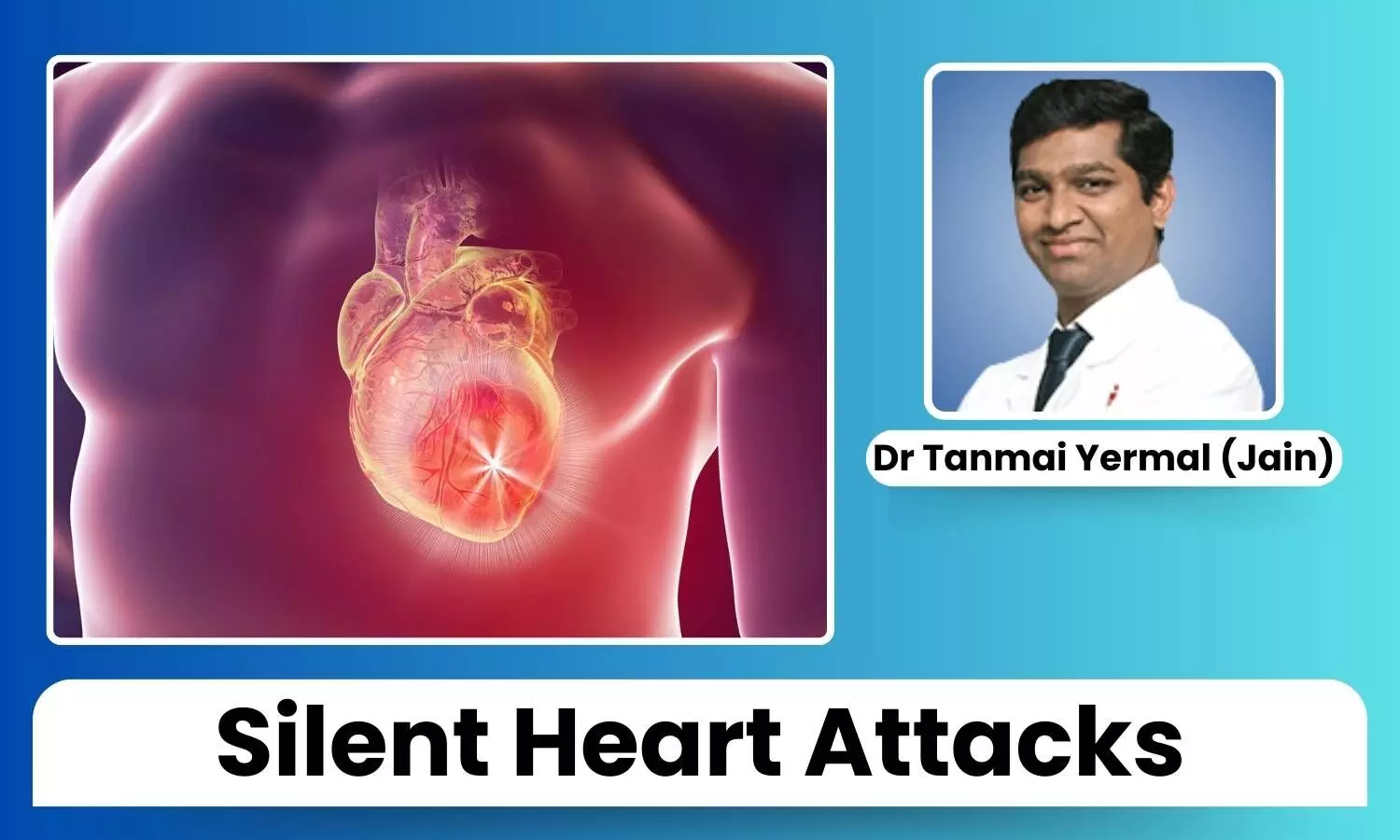Silent Heart Attacks: How To Detect Heart Problems Without Symptoms - Dr Tanmai Yermal Jain

India's rising rates of cardiac disorders are a significant issue for public health. A deskbound lifestyle and poor dietary choices are contributing factors to the significant increase in cardiovascular disease incidence across the nation.
Silent heart attacks are a particularly hazardous condition. Due to the absence of common symptoms, numerous individuals go unnoticed from these cardiac events. As heart-related problems continue to increase across the country, understanding silent and early signs of heart attacks becomes increasingly important for maintaining cardiac health.
What Exactly is a Silent Heart Attack?
A myocardial infarction (SMI) or commonly known as a heart attack occurs when the blood supply to a part of the heart is lost, leading to myopathic damage.
Silent attacks, unlike regular heart attacks that are accompanied by chest pain, dyspnoea, and diaphoresis, often go unnoticed or are misinterpreted as minor discomfort like indigestion or exhaustion.
Due to the absence of visible symptoms, individuals are at risk and may wait until they have experienced significant cardiac damage before seeking medical attention.
A recent study published by the voice of healthcare states that silent heart attacks are rapidly increasing in India, particularly among the urban population.
What are the Repercussions of a Silent Heart Attack?
Silent heart attacks have a significant impact on one's health. The risk of future cardiac events, heart failure, and other cardiovascular complications is increased due to undiagnosed events that can result in long-term damage to the myocardium.
The lack of awareness about a previous attack can lead to increased heart pressure and strain over time. This poses a particular challenge for certain individuals.
Those troubled with risk factors such as diabetes, hypertension, and a history of cardiac disease must practice significant caution in relation to their own health.
What is the Correlation between Silent Heart Attack and Heart Failure?
Silent heart attacks can result in heart failure if left untreated. Similar to an identified heart attack, myocardial tissue is damaged during these events and the heart's function is compromised.
Why Does This Happen?
Over time, this can result in chronic heart failure where the body cannot meet its metabolic demands due to an enlarged heart. The typical progression involves:
- Non-invasive myocardial tissue damage is a common symptom of myofascial infarction.
- Heart failure is characterized by impaired cardiac pumping ability, leading to fatigue, dyspnoea, and fluid accumulation.
- Severe cardiac arrest and arrhythmias are among the serious complications that can occur due to advanced myocardial damage caused by severe heart failure.
What is the Risk of Non-Myocardial Infarctions if elevated?
Progressive myocardial damage is caused by silent heart attacks, which can become dangerous if left untreated. High rates of comorbidity are more likely to result in severe adverse effects, including diabetes mellitus, hypercholesterolemia and obesity. The lack of medical attention is a significant factor in the development of myocardial damage. A prior silent myocardial infarction may be exhibited by: -
- Tenderness in the upper or lower body.
- Dyspepsia or nausea.
- Light-headedness or vertigo.
How to Prevent Heart Attacks?
By adopting heart-healthy practices, heart attacks can be prevented on many occasions. Key preventive measures include:
- Regular medical examinations: regular monitoring of cardiac health, including blood pressure, glucose levels, and lipid profiles, can assist in detecting early signs of disease.
- Healthy diet: heart health is improved through a healthy diet that includes fruits, vegetables, whole grains, and lean proteins, as well as low levels of saturated fats and sugars.
- Routine exercises: regular exercise can improve heart health, reduce blood pressure and help keep weight.
- Comorbidity management: the control of comorbidities, such as diabetes and hypertension, can reduce the risk of both apparent and silent myocardial infarctions. The threat of cardiac death is hidden from observation and silent heart attack come unnoticed until damage is done on a large scale. Due to the growing nature of cardiac illness in India, it is also important to address cardiovascular health first and keep one alert to catch even early indicators of a heart attack. The likelihood of this slow-burning disorder can be negated by the fact that patients follow a proper healthy lifestyle and consult doctors routinely.


